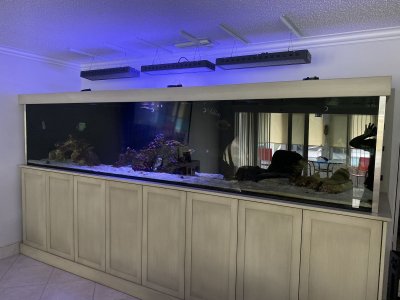- Joined
- Jul 8, 2019
- Messages
- 279
- Reaction score
- 80
Can anyone advise me of a medication I can use to get rid of the parasite, I have tried CP, praziquantel and copper several times for the last year to no avail. Can't place fish in quarantine due having 24 and some are 12 inches and bigger. Tank is 600 gallons 12 ft long fish only.
I appreciate any advice on how to beat Neobenedenia, Thanks
I appreciate any advice on how to beat Neobenedenia, Thanks




















